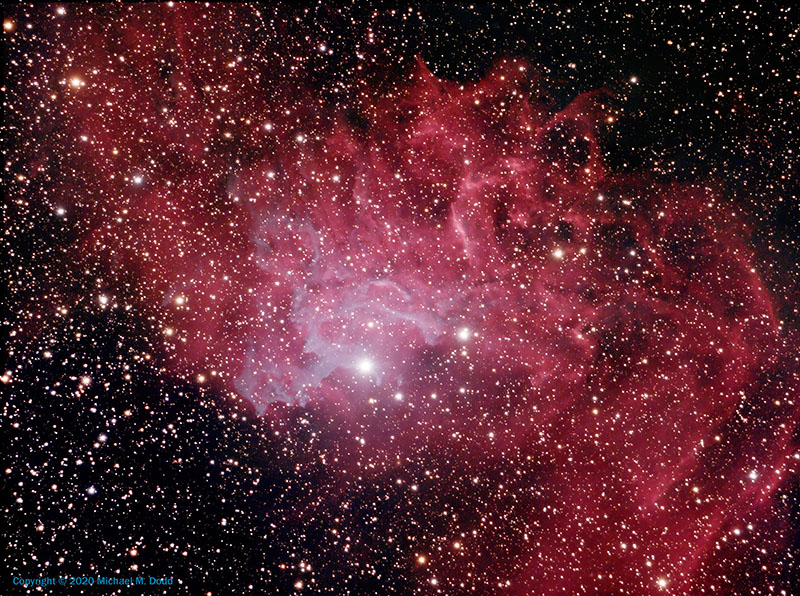Located in the southern part of the constellation of Auriga is a cloud of dust and hydrogen gas that is being illuminated by the bright star AE Auriga. The powerful radiation ionizes the hydrogen gas, causing it to glow red. The blue glow is caused by AE Auriga's intense blue light reflecting off the dust. Astronomers believe AE Auriga originated in the Orion Nebula, and was ejected from it after a close encounter with another star. AE Auriga is moving rapidly through IC-405's dust and gas cloud, and in the future will leave it dark again.
I first acquired this image in January, 2020. But that image had only 3½ hours total exposure, and I wanted more for smoother nebulosity. So 11 months later, in December, I got another 6¼ hours.

| Exposure |
• 9¾ hours (118 X 5 minutes) @ -20°C • Dusk flats • Camera position angle: 215° |
| Processing |
• With PixInsight: ☞ Calibrate, star-align, and integrate subframes ☞ Background neutralization ☞ Histogram transformation ☞ Curve transformation to boost red channel • Noise reduction with Topaz DeNoise AI • Final tweaking and sizing in Photoshop CS6 |
| Date and Location |
• 2020: January 21 & December 9 • Louisa County, Virginia, USA |
|
Equipment |
• TMB-130SS APO refractor @ f/7 on an A-P 1200 mount • ZWO ASI-1600MC Pro color camera • Guided with an ST-402 camera on a 60mm f/5 scope • Imaging and autoguiding with MaxIm DL 6.20 • Automated image acquisition with ACP Observatory Control |
Updated May 23, 2023